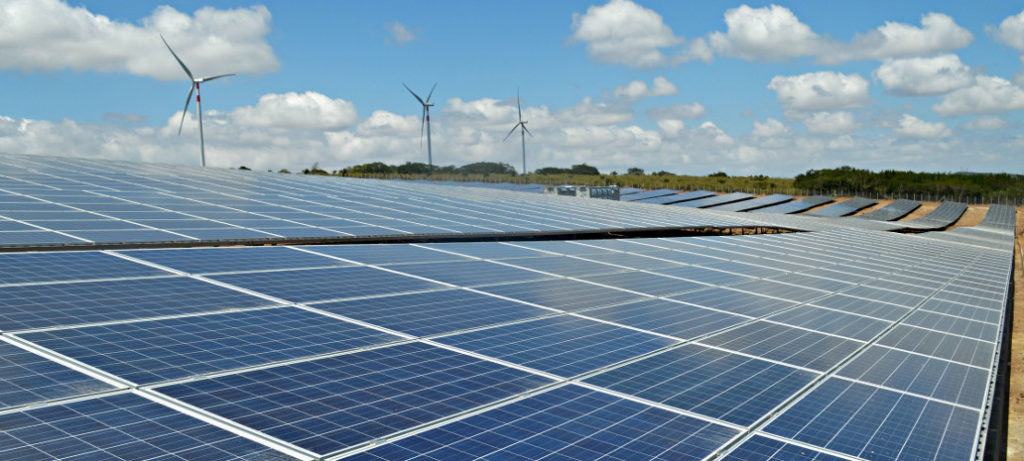Hybrid renewable energy projects combining solar and wind power generation are gaining traction globally and now appear to be winning favor with the Solar Energy Corporation of India and several state governments.
Although the nation has only 100 MW of hybrid facilities at present, analyst Crisil predicts around 15 GW of combined wind and solar capacity will be installed in India over the next five years. Of the new project capacity, around 10 GW is already under construction or being tendered – and will start feeding the grid by 2024.
Co-locating solar and wind plants reduces the variability of generation and improves grid security, overcoming the reluctance of electric distribution companies to act as renewable energy offtakers. Combining the two technologies also offers developers the chance to maximize returns, even on sites with sub-optimal solar and wind resources.
Challenges
A Crisil report into hybrid projects states pricing will be critical to even wider adoption. The analysts estimated wind-heavy facilities will be able to produce electricity for tariffs of around Rs2.80-2.90/kWh, compared to Rs2.50 for solar and Rs2.80-2.85 for wind.
“The [hybrid] tariff can be brought down by another Rs0.10/kWh if the co-location clause (necessitating the wind and solar components to be located at the same place) is removed,” said the analysts.
For wind-solar hybrid-plus-storage projects, Crisil estimated a weighted average tariff – including on and off peak periods – of Rs4.04-4.30 could be reached, as witnessed in recent auctions. Such a power price would be competitive with equivalent thermal power prices of Rs4.40/kWh.
Lack of transmission infrastructure at sites with suitable solar and wind resources was cited as a potential hurdle to hybrid project deployment, as well as grid balancing technical concerns.
Pipeline
Some 3.9 GW of hybrid generation capacity has been proposed in India, with a further 4.5 GW which will be associated with energy storage. In addition, 1.1 GW of hybrid capacity is expected as part of the 5.4 GW envisioned under the round-the-clock (RTC) scheme introduced by the Ministry of New and Renewable Energy to even out intermittency concerns by bundling clean energy generation with coal-fired power. The RTC program mandates a 51:49% ratio of renewables to thermal facilities.
“Since wind-solar hybrid projects with energy storage systems (ESS) can cater to peak and RTC power demand, they can reduce the country’s dependence on gas-based and pumped hydro-based peaking plants,” wrote the Crisil analysts. “They can also improve the role of RE [renewable energy] in providing grid ancillary services on the generation side. Moreover, they can spur ESS demand by [encouraging the] building [of] an effective storage ecosystem.”
This content is protected by copyright and may not be reused. If you want to cooperate with us and would like to reuse some of our content, please contact: editors@pv-magazine.com.









1 comment
By submitting this form you agree to pv magazine using your data for the purposes of publishing your comment.
Your personal data will only be disclosed or otherwise transmitted to third parties for the purposes of spam filtering or if this is necessary for technical maintenance of the website. Any other transfer to third parties will not take place unless this is justified on the basis of applicable data protection regulations or if pv magazine is legally obliged to do so.
You may revoke this consent at any time with effect for the future, in which case your personal data will be deleted immediately. Otherwise, your data will be deleted if pv magazine has processed your request or the purpose of data storage is fulfilled.
Further information on data privacy can be found in our Data Protection Policy.